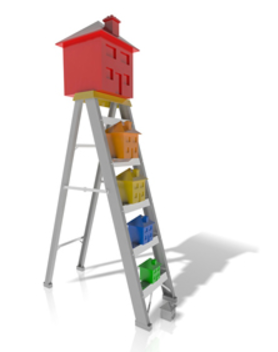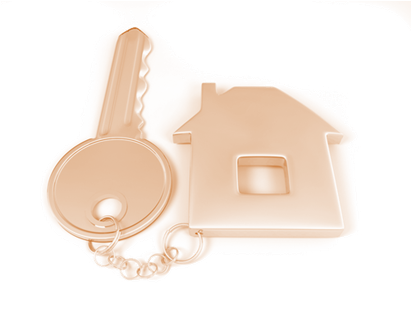 Creating a will is important because it helps ensure that your assets are distributed according to your wishes. Depending on where you live, local law dictates how your estate should be handled without a will, which may not match what you wanted. If no executor is named in the will, then the court will appoint one for you.
Creating a will is important because it helps ensure that your assets are distributed according to your wishes. Depending on where you live, local law dictates how your estate should be handled without a will, which may not match what you wanted. If no executor is named in the will, then the court will appoint one for you.
Whether you’ve just sold your company or are ready to get your affairs for your family, creating a last will and testament is incredibly important. While it may seem like an intimidating task, it’s actually quite easy to do yourself. Here are some tips for writing a last will and testament:
Consult a lawyer
In the event of a death, a will is the most important document in the estate. It contains instructions regarding who gets what and when. A will can also be used to ensure that a deceased person’s wishes are carried out regarding his or her funeral arrangements, who should get custody of minor children, and how long an executor should hold on to certain assets.
If you don’t have a will, or if it does not contain all of your wishes, then the state will decide who gets what and when. This can cause problems for anyone not included in your will or whose wishes were not considered by whoever drafted it.
If you need help ensuring that your last wishes are known and respected after your death, consulting with probate solicitors is one of the best ways to do so.
 Write your will
Write your will
When it comes to writing your will, the first thing you need to consider is whether or not you have a will at all. If you don’t, then this is the time to get one.
Next, you should consider who should be responsible for distributing your assets after your death. This can be done in one of two ways: through an executor or through a trust. An executor is probably best if there are only a few assets to deal with, while a trust can be more complex but allows greater control over what happens with the assets after your death.
Finally, ensure that any beneficiary named in the will has been told about it and understands its contents!
Appoint an executor
An executor is a person who makes sure that your wishes are carried out. They’re responsible for collecting your assets, settling debts and taxes, distributing assets to beneficiaries and overseeing any trusts you’ve created.
It’s important to appoint an executor because they need to be able to act on your behalf when you die, which could be at any time. You should also choose someone who is responsible, trustworthy and willing to comply with the terms outlined in their will.
You can name more than one person as executor if there’s a chance that one might not be around when it comes time for them to carry out their duties. You can also make sure they are independent of one another so they don’t have conflicts over how things should be handled or how much each beneficiary should receive.
Make sure your wishes are clear and concise
It is important that you make sure your wishes are clear and concise when writing your last will and testament, because it will help to ensure that your estate is divided as you intended. If the language in your will is ambiguous or confusing, there’s a chance that the person who is charged with carrying out your wishes may not understand how to do so. When this happens, it could result in a court battle over who should receive what.
Additionally, if you die without a will, state law will determine how your assets are distributed. This could mean that some or all of your assets end up going to distant relatives or charitable organisations rather than those closest to you—and potentially not where you wanted them to go.
{ 0 comments }
 Protecting your business needs to be a main priority. The countless hours of hard work that you have channeled into your company could be lost within moments if you fail to take the right steps to protect what you have built, and there are so many risks and dangers that can strike at any time.
Protecting your business needs to be a main priority. The countless hours of hard work that you have channeled into your company could be lost within moments if you fail to take the right steps to protect what you have built, and there are so many risks and dangers that can strike at any time.  Prioritise Fire Safety & Prevention
Prioritise Fire Safety & Prevention Don’t Forget About Digital Security
Don’t Forget About Digital Security A local convenience store can be a great business venture. Not only do you get to be your own boss, but you also get to serve your community. Whether you’re looking to start a small mom-and-pop shop or a larger franchise, there are some things you need to do in order to get started.
A local convenience store can be a great business venture. Not only do you get to be your own boss, but you also get to serve your community. Whether you’re looking to start a small mom-and-pop shop or a larger franchise, there are some things you need to do in order to get started. Millennials are often pegged as the generation with the worst financial habits. They’re also known for being broke and indebted, which makes their reputation even worse. Millennials are actually very concerned about their finances and want to improve their standard of living. Traditional ways of getting ahead — such as buying a home or getting married — are out of reach for many Millennials because of financial barriers like student loans and high cost of living. But that doesn’t mean they can’t improve their finances! There are plenty of challenges when it comes to money, but these tips can help anyone in this generation take control of their finances and start moving towards a better future. Read on to learn about different topics related to your finances!
Millennials are often pegged as the generation with the worst financial habits. They’re also known for being broke and indebted, which makes their reputation even worse. Millennials are actually very concerned about their finances and want to improve their standard of living. Traditional ways of getting ahead — such as buying a home or getting married — are out of reach for many Millennials because of financial barriers like student loans and high cost of living. But that doesn’t mean they can’t improve their finances! There are plenty of challenges when it comes to money, but these tips can help anyone in this generation take control of their finances and start moving towards a better future. Read on to learn about different topics related to your finances!
 Even if you have a great idea for a business, it may not be enough if you don’t have the money to take it to the next level. Still,
Even if you have a great idea for a business, it may not be enough if you don’t have the money to take it to the next level. Still, Speak To Local Business Owners
Speak To Local Business Owners  If you are in the middle of a business relocation, then you will know how stressful it can be. You may feel as though you have so much to think about and that you also have barely any time to get it all done. If this is the case, then you have to remember that you are not alone. So many people are in the same position as you, but if you utilise these tips, you should find that you can get everything organised in plenty of time.
If you are in the middle of a business relocation, then you will know how stressful it can be. You may feel as though you have so much to think about and that you also have barely any time to get it all done. If this is the case, then you have to remember that you are not alone. So many people are in the same position as you, but if you utilise these tips, you should find that you can get everything organised in plenty of time. Consider your Employees
Consider your Employees Are you opening a manufacturing plant? Are you sure you have everything you need? While you could think you do, you could’ve overlooked a few things. That’s especially true with the equipment you need when starting a manufacturing plant.
Are you opening a manufacturing plant? Are you sure you have everything you need? While you could think you do, you could’ve overlooked a few things. That’s especially true with the equipment you need when starting a manufacturing plant. Equipment You Need When Starting A Manufacturing Plant: 5 Top Options
Equipment You Need When Starting A Manufacturing Plant: 5 Top Options 4. Air Compressors
4. Air Compressors Investing in property can be incredibly lucrative, but there is always a level of risk involved in buying and selling real estate. If you’re looking to get into the property market, it’s wise to be proactive in maximising your chances of making money. In this guide, we’ll outline some steps you can take to
Investing in property can be incredibly lucrative, but there is always a level of risk involved in buying and selling real estate. If you’re looking to get into the property market, it’s wise to be proactive in maximising your chances of making money. In this guide, we’ll outline some steps you can take to  Research investment opportunities
Research investment opportunities Cater to your ideal buyer or tenant
Cater to your ideal buyer or tenant Bide your time
Bide your time Starting your own company is very exciting, and a couple of businesses will always be needed, like plumbers and electricians. If you have decided to start your own business and you have a background in electrical – this is the post for you!
Starting your own company is very exciting, and a couple of businesses will always be needed, like plumbers and electricians. If you have decided to start your own business and you have a background in electrical – this is the post for you!  Marketing
Marketing